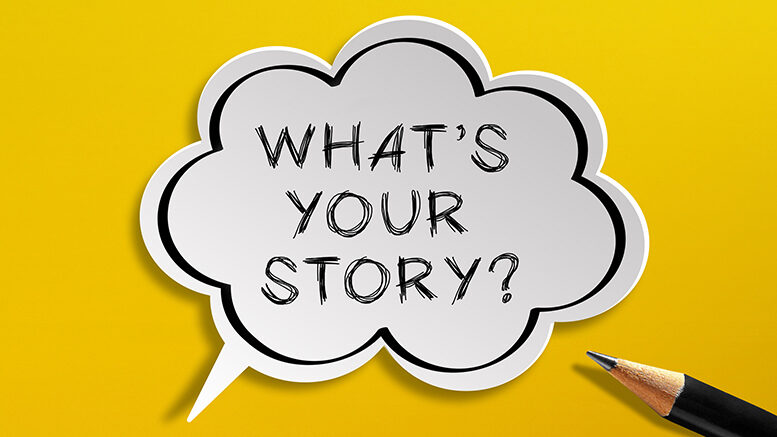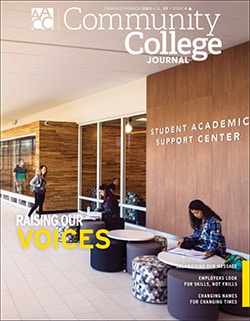With enrollment down, competition increasing from company training and university associate degree programs, and people’s perceptions of community colleges still lagging behind the robust reality of what they have to offer, how can those in the field raise their collective voices to advocate for their institutions and two-year colleges, in general?
What messages should community college administrators and faculty put forth regarding affordability, quality, value and equity? How should those messages be tailored to different audiences, both in terms of content and media? And do two-year colleges self-advocate vociferously enough, or are they too shy to speak up on their own behalf?
This article is an excerpt from the new issue of the Community College Journal, published by the American Association of Community Colleges.
Linda García, executive director of the Center for Community College Student Engagement (CCCSE), suggests putting students’ stories front and center while also calling upon faculty to tell theirs.
“It’s critical that community college faculty communicate the value of what the community college experience can provide to students: How it can lead to great jobs and great opportunities,” she says. “It’s an opportunity for students to get reskilled, or an opportunity for students who want to transfer to a four-year university. There’s so much value in the connections with business and with the community.”
While some in the public at large might downplay the benefits of community colleges, CCCSE has found that more than 90% of students responding to their surveys say they would recommend their own institution to a friend or family member, García says.
“That’s notable,” she says. “They trust the community college to get them to the finish line. That says a lot.”
Spotlight on guided pathways
To ensure that students continue to succeed — and have those success stories to tell others — García recommends that colleges lift up their own work on guided pathways, as encouraged through the American Association of Community Colleges’ own Pathways Project.
“Especially working with dually enrolled students, making sure that what they’re enrolled in connects to their end path at the college,” she says. “It’s about communicating that there is a path that colleges can provide, that crystal clear plan, a sequence of courses that leads to livable-wage jobs.”
That’s been particularly important to communicate during the past few years since the pandemic began, García says, because while students’ needs haven’t necessarily changed, Covid has shined a brighter spotlight on those needs. Students of color, for example, were more likely to be concerned about social distancing but also more likely to experience insecurities in food and housing — as were women with children. “It amplified the situations that were already there,” she says.
Yet CCCSE’s research found that students who were the most food or housing insecure were also the most engaged in their respective campuses, García says. “Think about how much our success rates would increase if we were to help those students more,” she says. “They’re already engaged but have higher challenges. That was a conversation starter for many colleges. … We’re not saying that community colleges should solve all their problems, but let’s help them make connections” with resources in the community.
The need for storytelling
In the broader picture, community colleges need to tell their own stories so that others don’t do so for them, says Francisco Rodriguez, chancellor of the nine-college Los Angeles Community College District.
“Community colleges are often a misunderstood, forgotten or maligned system of higher education,” he says. “It’s our opportunity to control and distribute and disseminate on multiple platforms, to multiple audiences, the virtues of community colleges. We should be empowered by our own narrative, because of our values and our mission as open access institutions, across groups, regions, blue states, red states, rural, urban and suburban.”
Rodriguez says his district feels empowered by whom it serves.
“There is no system of higher education that is as egalitarian as community colleges,” he says. “We are the modern-day Ellis Island, accepting all who benefit. … The diversity of our student body is something that should be lauded. We serve more veterans, more former foster youth, more formerly incarcerated, more student-parents, more students with disabilities, more students of color, more students who are linguistically diverse, than any other system of higher education. Those are all assets, talking points [and] evidence of opportunity — and of democracy.”
Venture beyond the familiar
To get their respective messages out, Rodriguez believes community colleges must collaborate with allies in the governmental, nonprofit and philanthropic world, and work to tell their stories in trade journals interested in subjects like the economy, democracy and vibrancy of communities and regional economies.
“We should look beyond the traditional landing places where we would normally find ourselves, and stretch beyond higher education,” he says.
Rodriguez echoes García in suggesting that students can be the most authentic messengers.
“They’re the most forceful communicators of the product we’re trying to deliver,” he says.


